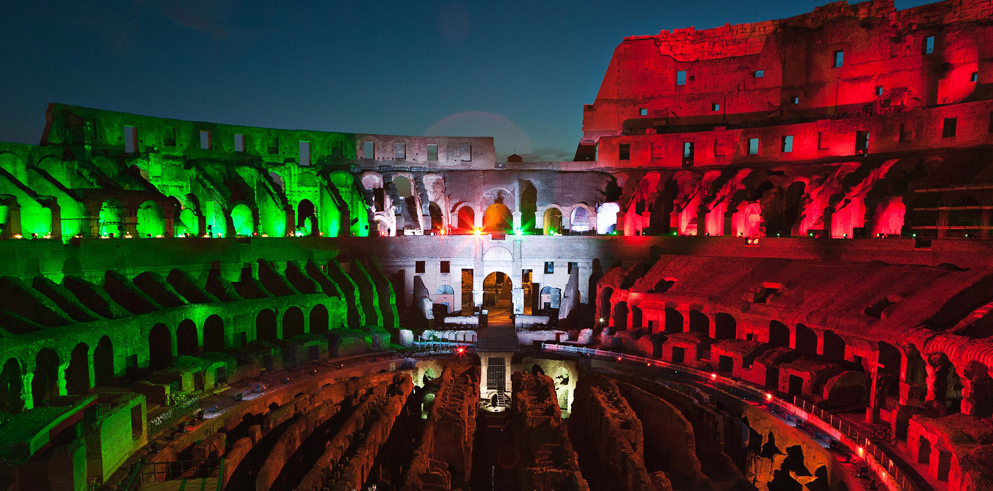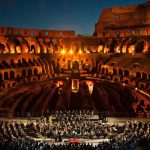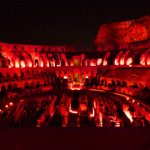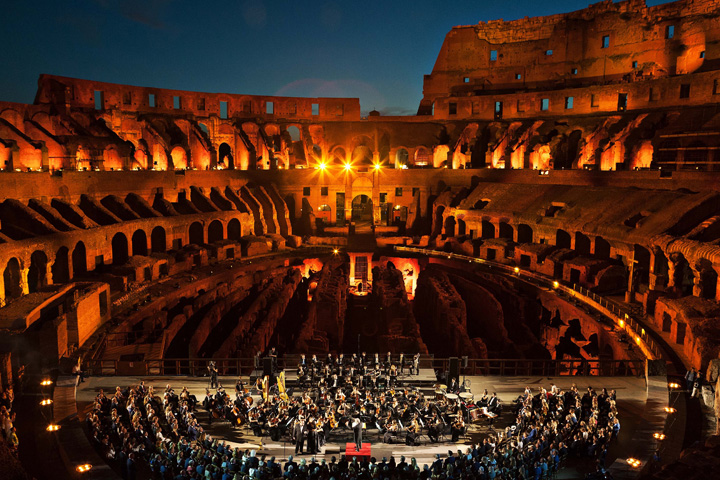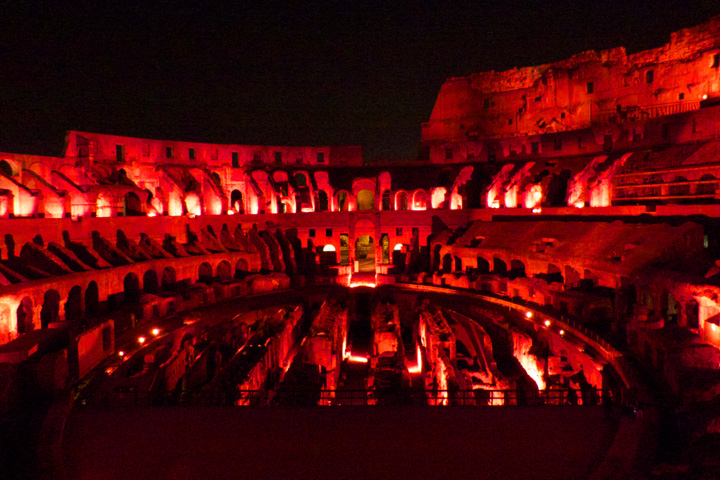Italy – The first part of an ambitious restoration and cleaning project has been completed on the Colosseum in Rome, the largest amphitheatre in the world, built in 72 CE.
The project was proudly financed by the Tod’s Group, and was a demonstration to Italy’s business world of how public and private interests can work together to support initiatives aimed at restoring and enhancing Italy’s artistic and cultural heritage.
On Friday 30 June, at the end of the first stage of work, there was a Gala Ceremony devoted to Italian-made products: 300 special guests from the worlds of politics, fashion and entertainment were there to announce the success and value of the act, which has brought immense public benefit through the protection of a monument.
In 2015, the Colosseum saw more than 6.5 million visitors, and was – according to Wikipedia – the second most visited archaeological site in the world, behind the great wall of China.
The dinner and concert by the La Scala Theatre Academy orchestra, conducted by Zubin Mehta, was lit with a spectacular rig of moving lights, including some of the most innovative, versatile, reliable and agile units on the market. In the complex lighting design, Claypaky lights played a leading role.
After a brainstorming for ideas, the lighting design was assigned to the Visionaria Art Group run by lighting director and designer Giancarlo Toscani, whose participation was repeatedly requested by Fulvio Michelazzi, technical manager of the event.
“I drew up a design and a visual presentation with multiple light scenes with the Visionary Art Group, which mainly deals with designs for shows and visual displays. The whole thing was conceived and displayed using software for 2D and 3D lighting designs.”
Once we were assigned the job, the virtual images became the guidelines for building the rig in order to recreate the settings and atmospheres we chose, including the impressive, all-encompassing, Italian-flag, three-colour light projection on the Roman amphitheatre.
“The lighting design aimed to convey the general concepts of the event, and illuminate and enhance the architectural peculiarities in full compliance with the constraints imposed by the Archaeological Heritage Office.” Besides the Italian flag projection, it was possible to illuminate the four different orders of arches and the upright elements, and envelop and brush against the surfaces of the building with light. The beam intensity was chosen to animate the shadows and create dynamic effects of movement and depth.
“Giving dynamic effects to the monumentality of the building and to the inherently static stone was an exciting choice, which required creativity, technical effort and high performance lights. When the light chased the shadow or vice versa, it looked for a moment as if the walls of the Colosseum were breathing and mouthing the words of a story, with undulating excitement.”
There were 26 Mythos units, the most highly advanced form of hybrid light. They work in two different modes without compromises in either. The Mythos is first of all an excellent spotlight. It produces an outstanding large or small light beam with an angle ranging from 4° to 50°. The Mythos units were fitted along the continuous second-level parapet to illuminate the interior faces of the Colosseum without breaks.
The constraints imposed by the Archaeological Heritage Office led to choosing non-invasive fixtures with low environmental impact, which were able to adapt to an extremely important historical and monumental context.
Another 100 battery-powered portable Glow-Up lights were used to give more prominence to the columns and interior pillars. Their light source consists of rugged power LEDs that last thousands of hours, in line with the energy saving and environmental sustainability requirements.
The last Claypaky lights were Sharpy Wash 330s, an extraordinarily compact, lightweight wash light with a 330 watt lamp, and the light output, visual effects and optical performance typical of a 1000 watt light. All 24 were fitted around the ring of the first level to enhance and illuminate the surrounding walls of the first and second levels.
The programming was done using a Hog III by Danilo La Rosa, Toscani’s assistant and co-worker. The event was produced by Studio Exhibita, which dealt with creating the whole project under the guidance of the supervisor Marco Ramon, project leader Elisa Brambati and executive producer Caterina Carlini.
